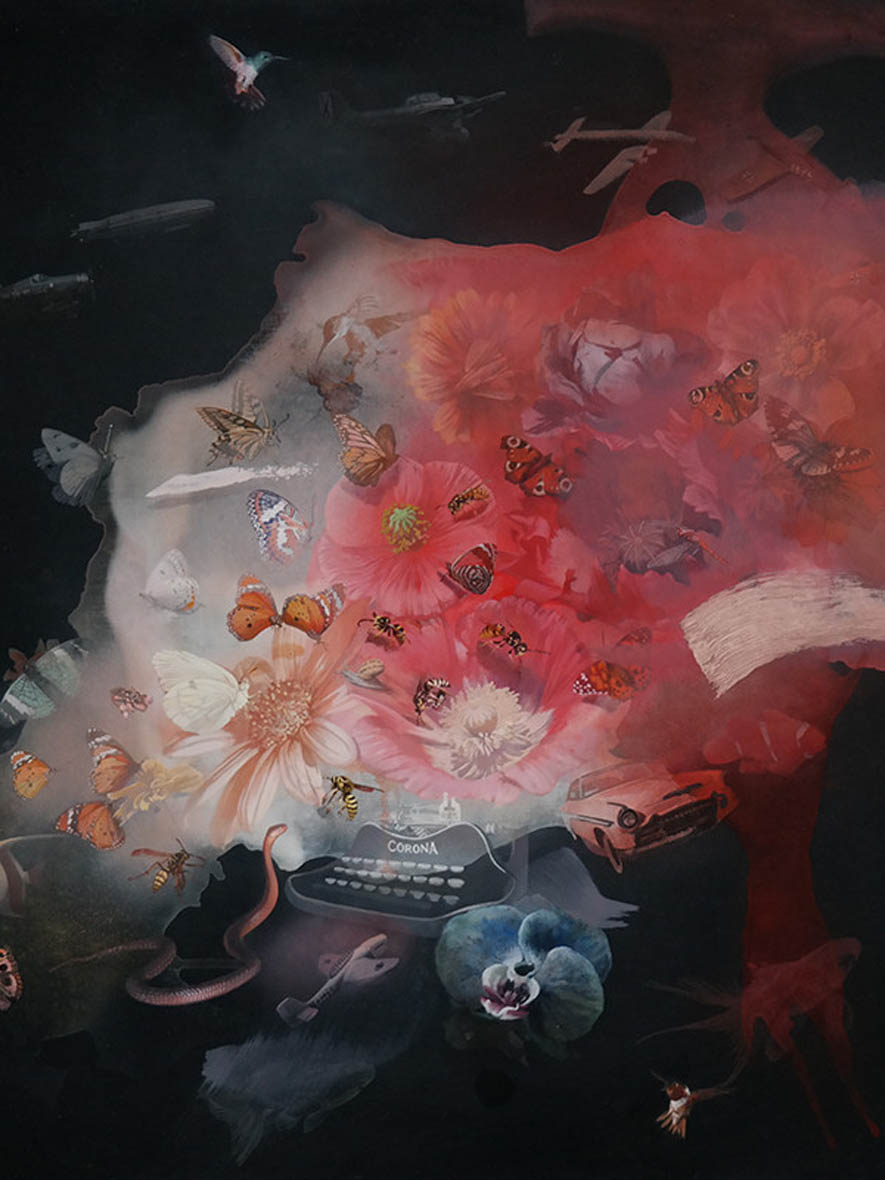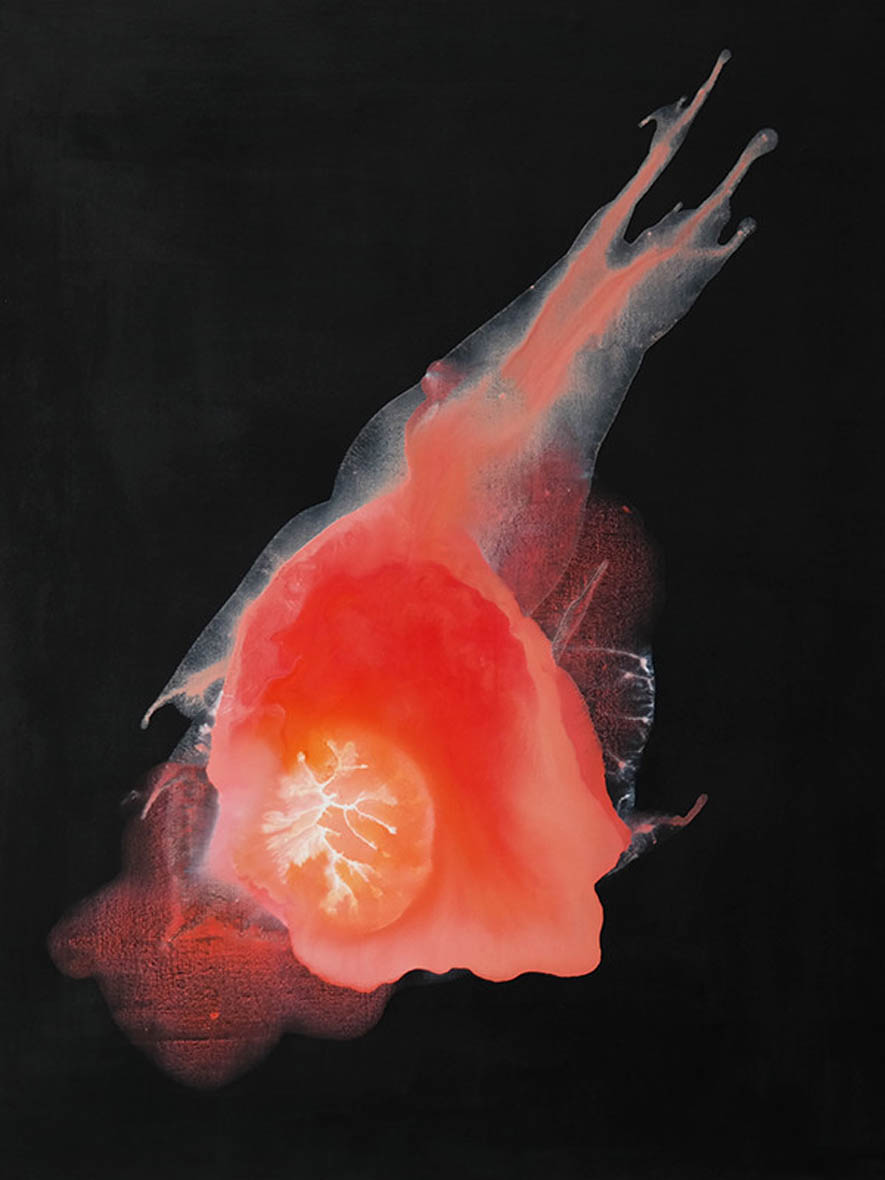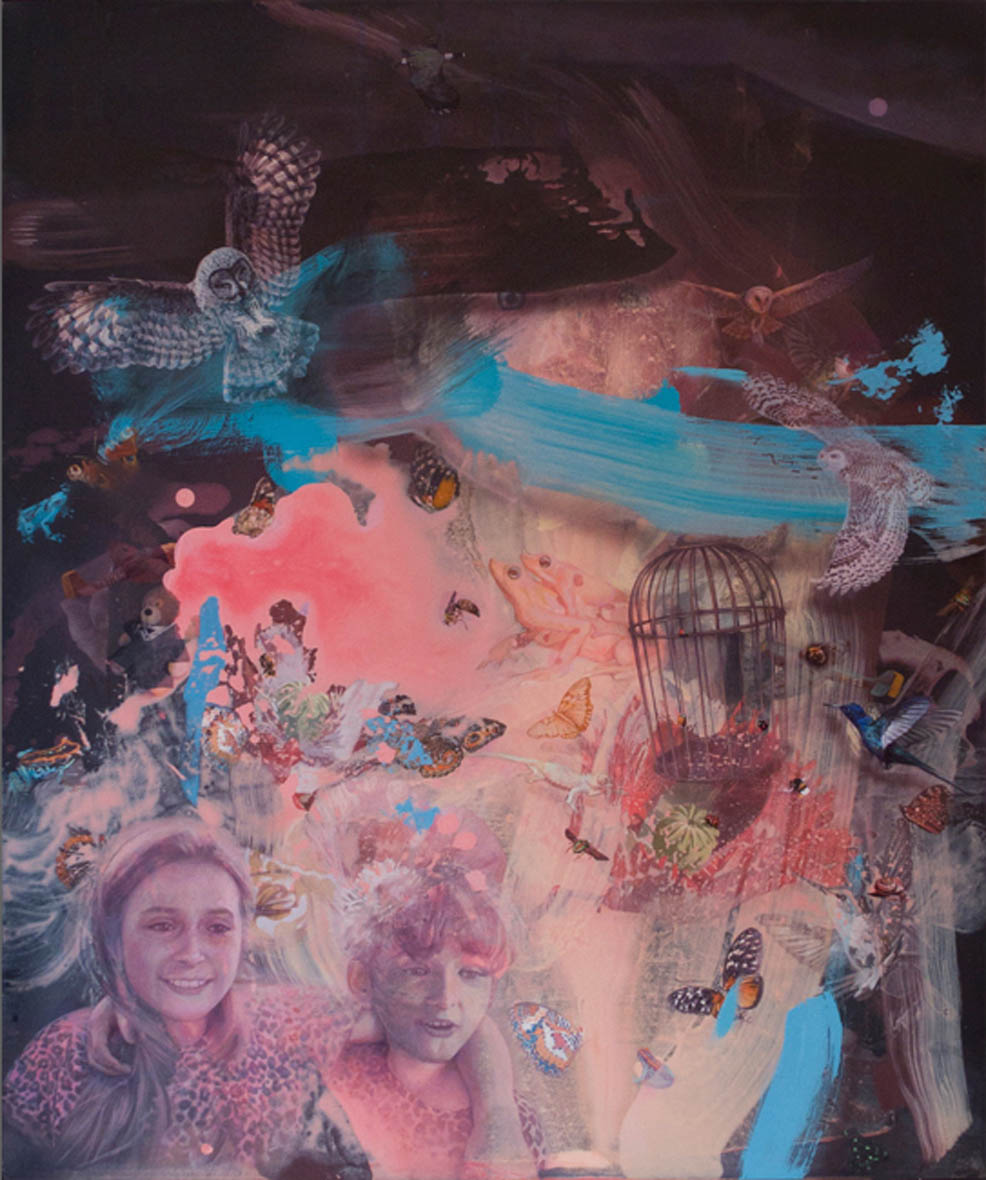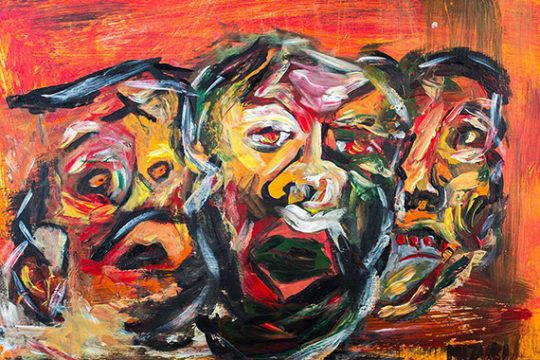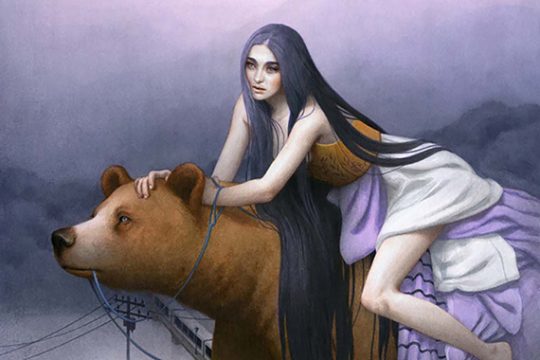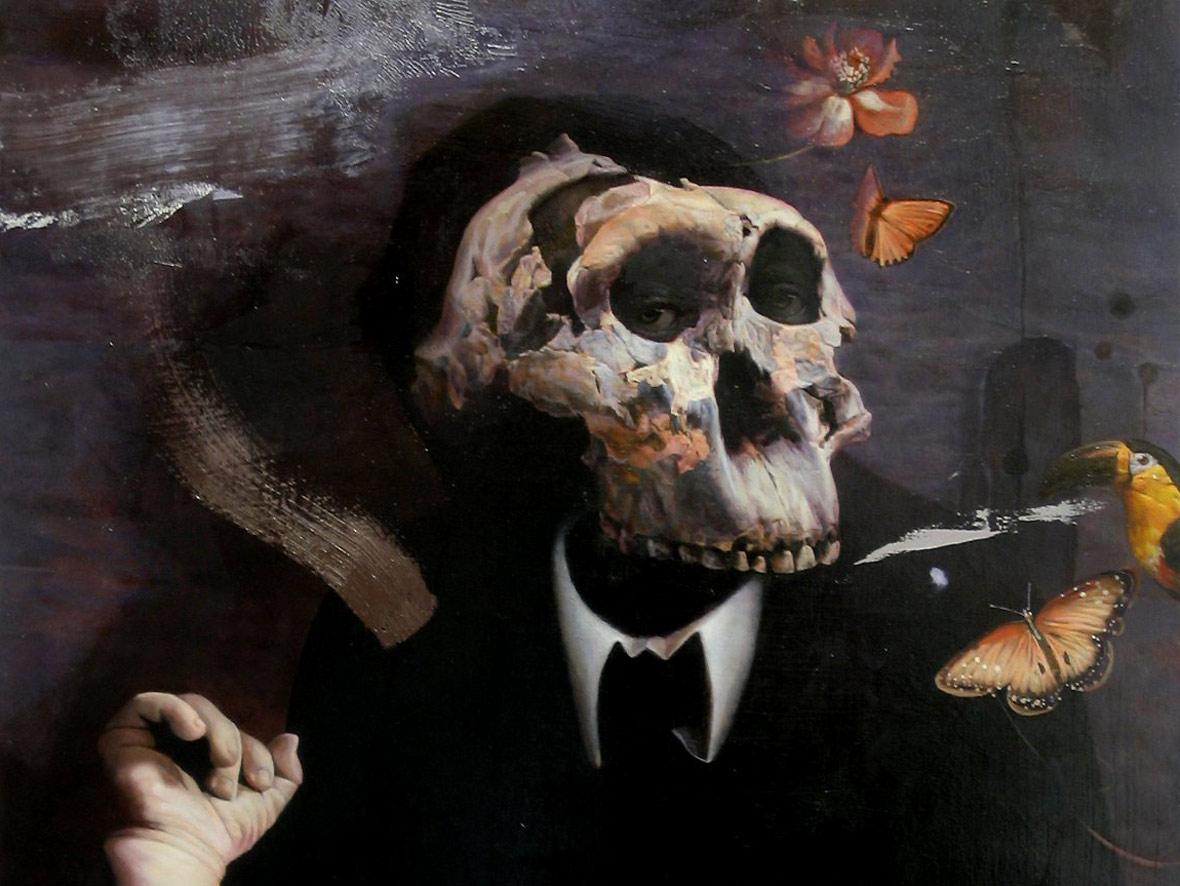
Japanese artist Masaki Yada uses a type of symbolism that is predominantly and usually seen in 17th century Dutch still life paintings to create his original style of art. His own aesthetics can be best described as “dark and cutting edge”. Masaki’s Eastern roots also leave imprints on his work; these influences are evident in the poetic and delicate details of his gorgeous creations. Masaki Yada skillfully uses contemporary techniques to reinterpret masterpieces of the past through his own means, and creates with a thoughtfulness that touches on many modern issues. Neocha recently spoke to Masaki about his dreamlike artwork, his journey as an artist, and his influences along the way.
日本人アーティスト、Masaki Yadaは、独自の美術様式を生み出すため、主に17世紀のオランダの静物画に見られる象徴性を用いています。彼の美学は、「ダークであり最先端」という言葉で最も端的に表現できるでしょう。また、Masakiの東洋のルーツもその作品に痕跡を残しており、その影響は詩的で繊細な細部に明らかな形で伺えます。彼は単に名作を再解釈するのではなく、現代文化に即した技術を駆使して制作しているのです。NeochaはMasakiに、その夢のような作品、アーティストとしての軌跡、そして、これまで彼が受けてきた影響について聞いてみました。
Neocha: Can you tell us about your journey into art?
Masaki: Initially, it was my mother who inspired me to paint. She is a trained painter, but didn’t really pursue a career as an artist. She graduated from an art college 45 years ago in Japan. At the time, it was generally agreed that women were supposed to get a stable job – they weren’t encouraged to become artists. So she had worked as an art teacher for 35 years. However, when I was born she named me Ya Yun in Chinese, which means elegant and artistic, and hoped that I would one day fulfill her dream of becoming a professional artist.
Neocha: アートの世界に足を踏み入れた経緯を教えていただけますか?
Masaki: 最初に絵を描くきっかけとなったのは母でした。母は熟練の画家なのですが、プロの芸術家の道に進んだわけではありませんでした。45年前に日本の美大を卒業した母ですが、当時、女性は安定した職に就くものと考えられていました。芸術家になるよう奨励されることはなかったのです。そのため、母は35年間美術教師を務めました。それでも母は、生まれた私に中国語で優雅で芸術的という意味のYa Yunと名付け、いつか息子がプロのアーティストになることを願ったのです。
Neocha: How was your work influenced by both Eastern and Western culture?
Masaki: I grew up seeing traditional Japanese and Chinese paintings because of my mother. I was exposed to the likes of Itō Jakuchū, Kanō school of painters, and Hasegawa Tōhaku. My mother was trained in a very traditional way in Japan. My first Western idols were Vermeer, Jan Van Eyck, Bruegel and other realist painters from the 16th century. I particularly love the Dutch and Flemish masters from the Dutch Golden age. I like their ethos of trying to break away from the religious constraints, and their eagerness of choosing more democratic themes really interests me. We tend to group old paintings as classical or simply “old”, but back then there were also many different styles, and many new ideas being formed and presented. I also like history paintings that comment on other paintings within the painting. For example, Vermeer’s paintings often does that. A lot of contemporary painters do it as well. I guess we are all fascinated with the idea of engaging in a dialogue with the masters from the past – it’s like how Renaissance painters wanted to engage in a dialogue with ancient Greek artists. My paintings are constantly evolving and are constantly being influenced by my surrounding environment as well as the people around me.
Neocha: 東洋と西洋の文化がどのようにあなたの作品に影響を与えたのでしょう?
Masaki: 母の影響で、日本と中国の伝統絵画を見て育ちました。伊藤若冲や狩野派、また、長谷川等伯といった画家の作品に触れました。母は極めて古典的な日本の手法で絵を学んだのです。私が最初に憧れた西洋の画家は、フェルメール、ヤン・ファン・エイク、ブリューゲル他、16世紀の写実画家でした。中でも、オランダ黄金時代のオランダやフランドルの巨匠らが好きです。宗教的制約から脱却しようとする彼らの気風に共感しますし、より庶民的な主題を選んだ熱意に興味を引かれます。昔の絵画を一様に古典あるいは単に「古い」ものと一括りしてしまうものですが、当時は数多くの画風や新しい画法が編み出され、発表されていました。また、絵画の中で他の絵画について解説する歴史的絵画も好きです。例えば、フェルメールの作品によくあるものです。多くの現代美術の画家も同様です。あたかも、ルネサンスの画家達が古代ギリシャの芸術家達との対話を望んでいたのと同じく、過去の巨匠との対話を通して繋がるという考えに誰もが興味をかき立てられるのではないでしょうか。私の絵は常に進化し、常に自分を取り巻く周囲の環境や人々に影響を受けています。
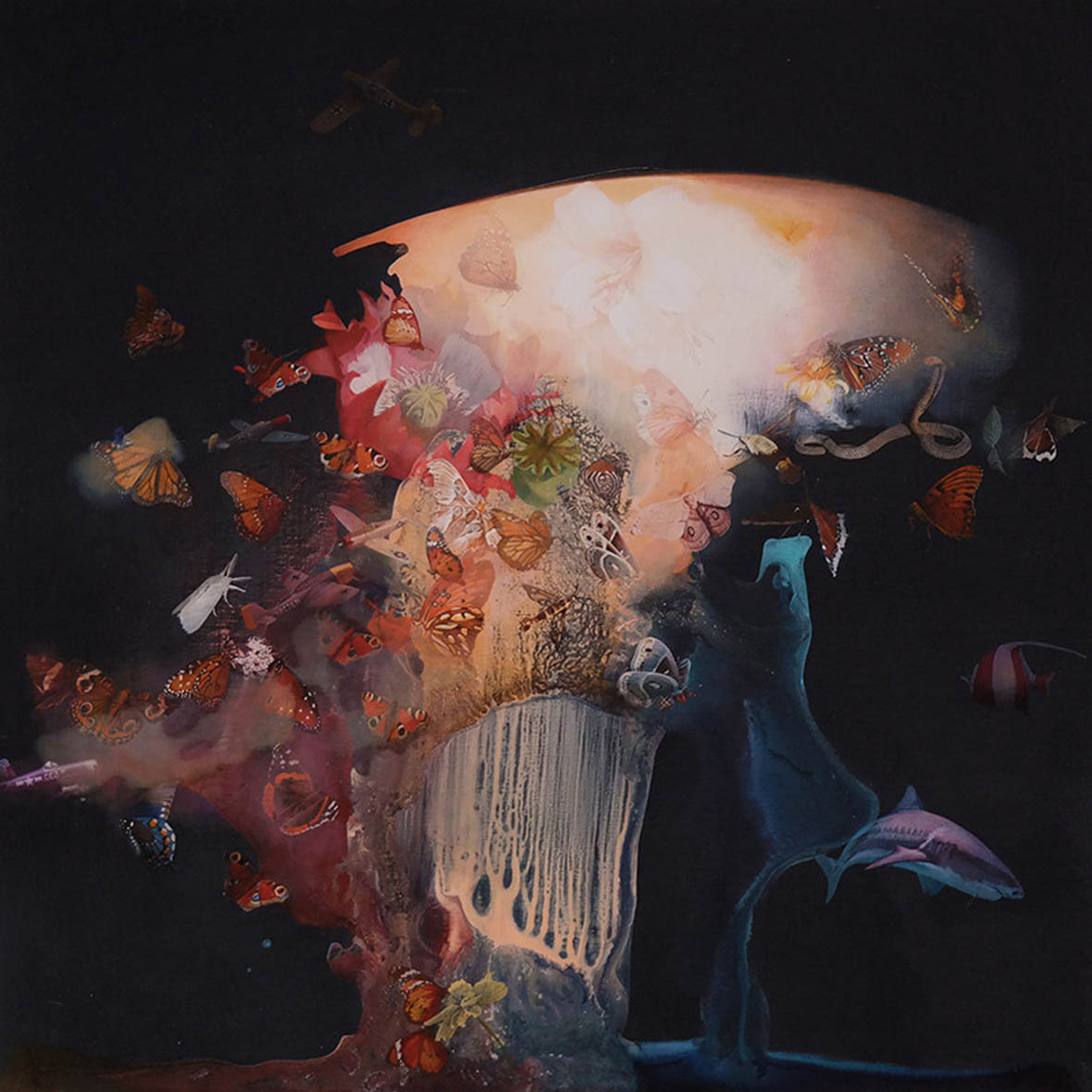
Neocha: What has been the biggest challenge during your creation process? What do you feel like has been your biggest achievement so far?
Masaki: My biggest challenge has been trying to find the “cross section” of who I am and what the world wants to see from me. If I try to be who I am not, then the discrepancy eventually catches up with me. But if I just make work that is purely self-indulgent, it’s like masturbation. To find the balance between them is an art in itself. The biggest achievement has always been the moment when I see the looks of the collectors who buy my paintings. For me, contributing to the happiness of people through my craft is way more important than any personal accolades. I feel like having the ability to enrich people’s lives through art is the greatest achievement, and I would like to continue doing that.
Neocha: あなたの制作過程において、これまでで最も大きな課題とは何でしたか?また、これまで達成した最大の功績とは何だと思いますか?
Masaki: 私の最大の課題は、自分という存在と人々が見たいと思うものの、いわば「断面図」を探し求めることでした。私が自分ではない者になろうとすると、いずれは食い違いが出てくるはずです。しかし、自己中心的な作品を作るだけなら、それは自慰行為のようなものです。その間でバランスを見い出すもの、それはアートそのものなのです。最大の功績は常に、私の作品を買ってくださるコレクターの様子を伺う瞬間です。私にとって、自分の作品を通して人々の幸せに貢献することは、どんな個人的栄誉より重要なものです。人々の生活を豊かにできると感じることが何よりの功績であり、これからも続けることができればと思っています。
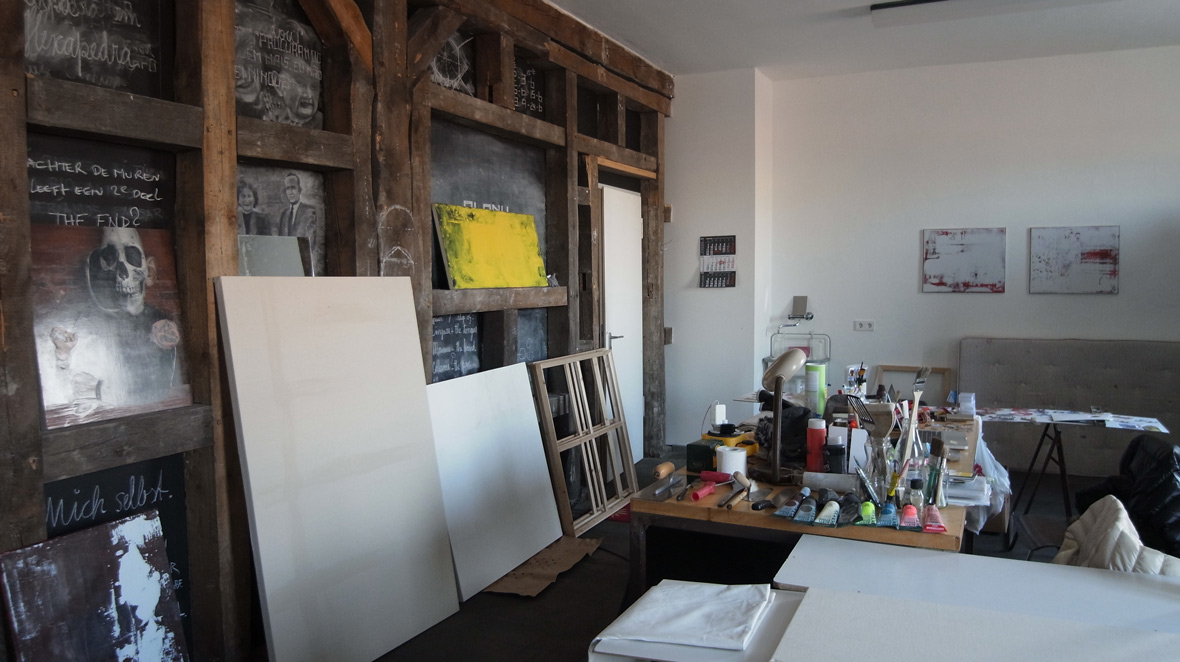
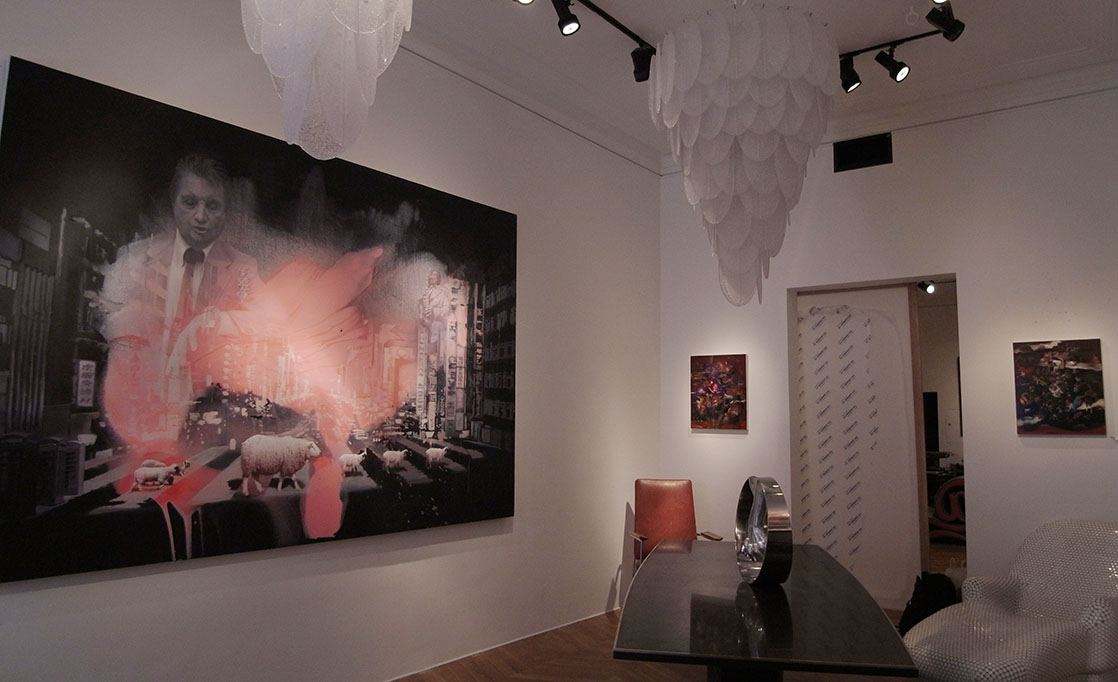
Neocha: Do you think artists have the social responsibility to change the world or even change society?
Masaki: My primary interest lies in the engagement in dialogues with the masters from the past and understanding people at a deep level. But I do believe that art has a power and influence to change the world. For example, in 2003 the U.S. Secretary of State Colin Powell made a public announcement when the U.N. decided to intervene in the regional matters of the Middle East. Behind Colin Powell, a tapestry with the image of Picasso’s Guernica was hung on the wall as if sending out an anti-war statement. The following day that painting was covered up as to not to send out a mixed message. So to some extent, art definitely has power. It can be highly effective when raising awareness of certain issues. But at the same time, art is also powerless. I spend a lot of time in Berlin now, so I see the influx of refugees from the Middle East. Art cannot help them directly. Art cannot give them food, accommodation, means of integration and so forth, but these are things they desperately need. As corny as it sounds, I believe in love and the power of creating positive energy that reduces conflicts amongst people through art. I am trying to do that on a small scale and in my immediate environment rather than trying the change the whole world.
Neocha: アーティストは、世界や社会を変える社会的責任があると思いますか?
Masaki: 私の基本的な関心は、過去の巨匠達と対話して繋がること、そして人々を深く理解することです。それでも、アートには世界を変える力や影響力があると信じています。例を挙げると、2003年に国連が中東の地域問題への介入を決定し、米国務長官のコリン・パウエルが正式発表した時のことです。コリン・パウエルの背後の壁面に、まるで反戦メッセージを送るかのようにピカソのゲルニカのタペストリーが掛けられていたのです。矛盾したメッセージと取られないよう、翌日にあその絵が覆い隠されていました。つまり、確かにアートにはある程度の力があります。ある特定の問題への関心を高めるにあたり、高い効果を及ぼすことがあります。ただ、同時にアートは無力なものでもあります。私はベルリンで過ごすことが多いため、中東からの難民の流入を目の当たりにします。アートで難民を直接救うことはできません。アートは、食べ物、宿泊施設、地域への同化手段といった、難民らが切望するものを何も提供することはできません。陳腐に聞こえるでしょうが、アートを通して、人々の争いを軽減する愛と正のエネルギーを生み出す力を信じています。私は、全世界を変えようというより、自分の周囲の環境内で小規模にそんな変化をもたらすよう努めています。
Neocha: What do you think the aim of art should be?
Masaki: The role of art is to determine the “cross section” of an artist’s self expression and how the world can be a better place through art. It may pertain to provoking thoughts, evoking emotions, and giving a sense in which we feel “alive”. When I was still an art student, I went through a phase where I believed in the role of art as a vehicle to change the world, and my work had a strong sense of socio-political elements. I still think of it as important to some degree, but recently I tend to distance myself from the emotions that I had then. It is because a little while ago I realized that perhaps I was driven by anger and frustration towards society as a whole. But now I understand that everyone is working hard, striving for their own survival, and to some extent, trying to do something good as well. With that realization, I now want to make art with positive emotions and an intent of brightening up people’s lives just like Liang Kai’s, Jan Eyck’s and Vermeer’s paintings did to me when I was as a child. I realized that positive energy, light, and smile can bring to us more good than anger, frustration, conflict and violence. I’ve gotten a bit older so that has made me wiser and more mature, but it does not mean that I deny all the processes that I have gone through thus far. Everything I’ve been through was necessary for me to get to where I am right now. Without experiencing them all, then I would not feel what I feel now. So I’m really thankful.
Neocha: アートの目的はどうあるべきだと思いますか?
Masaki: アートの役割とは、アーティスト自身の表現の断面図とアートによっていかに世界をより良くするかを決めることにあります。それは、思考を刺激すること、感情を喚起すること、また、「生きている」と感じる感覚を与えることと関係するでしょう。私がまだ美術学生だった頃、世界を変える手段としてのアートの役割を信じ、自分の作品が強い社会政治的要素を反映していた時期がありました。今でもある程度までは重要だとは思いますが、最近では当時のそういった感情から自分自身を遠ざける傾向にあります。それは、自分が全体としての社会への怒りや不満に突き動かされていたのかもしれないと少し前に気づいたためです。今では、生き残るために誰もが懸命にもがき、何かしら良いことをしようと努力していることがわかっています。それに気づいた今、かつて子供だった自分を梁楷、ヴァン・エイク、フェルメールの絵が元気にしてくれたように、ポジティブな感情で人々の生活を明るくする目的でアートを作りたいと思っています。正のエネルギーや光、そして笑顔は、怒りや不満、争い、暴力より人々のためになると気づいたのです。少し歳をとった分、賢く成熟したわけですが、だからといって自分がこれまで歩んできた全ての過程を否定するわけではありません。私が経験したことは、今ある自分にとってどれも必要なものでした。過去に経験したことが少しでも欠けていれば、今の感情はなかったわけです。ですから、自分の経緯には感謝しています。
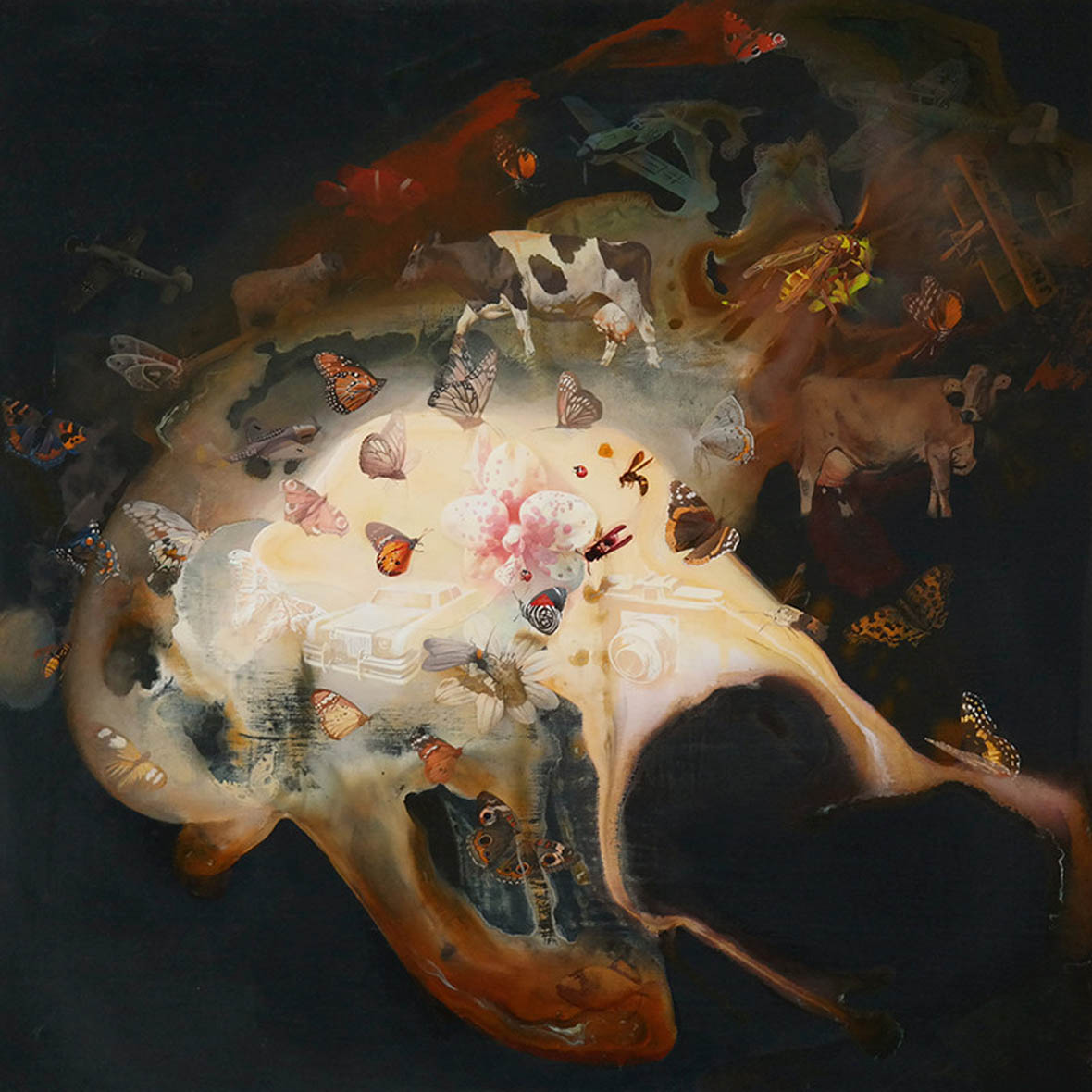
Neocha: How do you handle the balance between creativity and financial incentives?
Masaki: When I think of creativity now, I often think of constraints as well. It is like yin and yang. Particularly now, the more limitations and restrictions I face, the more creative I have to become. In fact, when people face restrictions and complain about the lack of freedom, I see the lack of creativity in them. For me, creativity is the ability to reconfigure unthinkable combinations and ideas that have never been connected before. Creativity is to explore the infinite possibilities of synthesizing different ideas. Splashing paint on canvas is, therefore, not quite creativity for me. True creativity actually involves diligent investigation of the past and deep understanding of the field, and finding a possibility that has never been explored before. True creativity is built on the contradictions. I think creativity and financial incentives can, therefore, be dealt with in proximity. Suffering and struggles should not be too romanticized. But of course, the main motive should be to make great art that moves people in a significant and emotional way.
Neocha: 創造性と金銭的報酬とのバランスをどう処理していますか?
Masaki: 創造性について考える時、制約についてもよく考えます。いわば陰と陽の関係のようなものです。特に今は、制限や制約に直面すればするほど、ますます創造性が問われます。実際、人が制約に直面し、自由のなさを訴える時、そこには創造性の欠如が伺えます。私にとって創造性とは、それまで何の繋がりもなく、思いもよらなかった組み合わせやアイデアを再構成する能力なのです。創造性は、異なるアイデアを合成して限りない可能性を探るものです。ですから、キャンバスに絵の具を飛び散らせることは私にとって創造性ではありません。真の創造性は、過去についての飽くなき探求とその分野の深い理解力、そして、それまで開拓されなかった可能性を見つけ出すことです。真の創造性は、矛盾の上に成り立つものです。そのため、創造性と金銭的報酬は近接して対処することができると思います。生活のため葛藤することはあまり美化されるべきではないでしょう。ただ、もちろん最も重要な動機は、人々の感情に強く訴える優れた芸術を生み出すことです。


